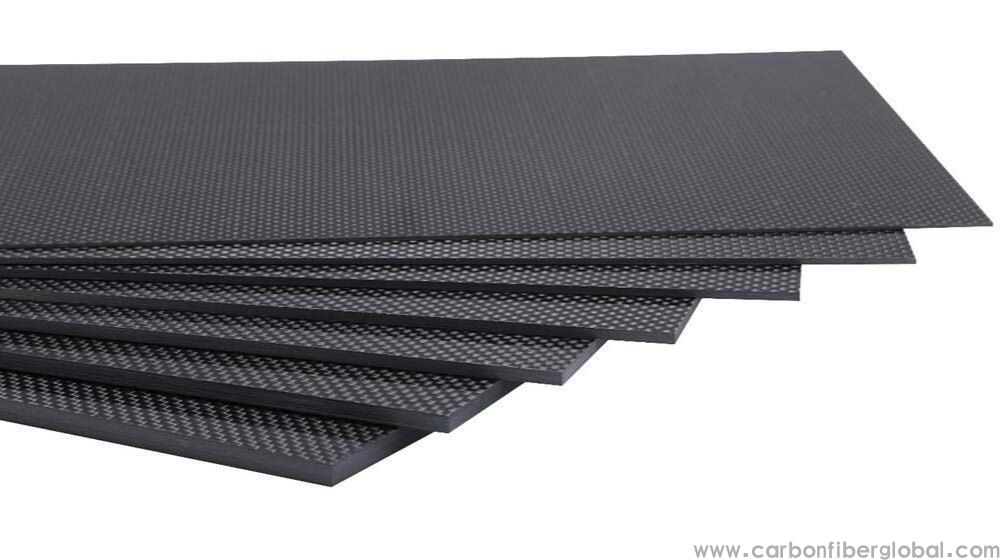In the world of advanced manufacturing, Carbon Fiber Sheets have emerged as a transformative material, particularly in aerospace and automotive industries. Known for their unique combination of lightweight strength, durability, and high-performance capabilities, Carbon Fiber sheets are reshaping how vehicles and aircraft are designed, built, and operated. This article will explore how carbon fiber is revolutionizing both the aerospace and automotive sectors by enhancing efficiency, performance, and sustainability.

1. Lightweight Strength for Enhanced Efficiency
One of the key benefits of Carbon fiber sheets is their exceptional Strength-to-Weight Ratio. Carbon fiber is significantly stronger than steel but far lighter, making it an ideal material for applications where weight reduction is crucial without compromising strength. This unique property has profound implications for both the aerospace and automotive industries.
In aerospace, the weight of an aircraft directly affects fuel efficiency, operational costs, and overall performance. By incorporating carbon fiber sheets into aircraft wings, fuselages, and engine components, manufacturers can reduce the weight of the aircraft, leading to significant improvements in fuel economy, reduced CO2 emissions, and increased payload capacity. For instance, Boeing’s 787 Dreamliner uses carbon fiber composite materials for nearly 50% of its structure, dramatically reducing weight and enhancing fuel efficiency.
Similarly, in the automotive sector, carbon fiber is used extensively in high-performance vehicles, particularly in luxury cars, sports cars, and racing vehicles. Lighter cars are not only more fuel-efficient but also offer improved handling and acceleration. For example, manufacturers like BMW and Lamborghini use carbon fiber in their body panels, chassis, and interior components to reduce weight and increase performance. The reduced weight improves fuel efficiency, allowing automakers to meet increasingly stringent emission standards while enhancing the vehicle’s overall handling and driving dynamics.
2. Durability and Corrosion Resistance
While carbon fiber sheets are light, they are also incredibly strong and durable, making them an ideal material for parts subjected to high stress and fatigue. In both aerospace and automotive applications, carbon fiber provides long-lasting durability, helping to extend the lifespan of critical components and reduce the need for maintenance.
In the aerospace sector, carbon fiber’s resistance to corrosion and fatigue makes it a perfect choice for parts exposed to extreme environmental conditions, such as high altitudes, fluctuating temperatures, and exposure to chemicals and moisture. Aircraft components made from carbon fiber can withstand the rigors of flight without deteriorating or weakening over time, which reduces maintenance costs and improves safety.
Similarly, in the automotive industry, carbon fiber’s resistance to corrosion offers significant advantages for vehicles exposed to road salt, moisture, and other corrosive elements. Unlike metals that are prone to rust and corrosion, carbon fiber maintains its structural integrity and appearance over time, leading to longer-lasting components and lower maintenance costs. This is particularly beneficial for high-performance cars that need to maintain both aesthetics and performance over the long term.
3. Heat Resistance and Temperature Stability
Another key characteristic of carbon fiber sheets is their ability to maintain structural integrity at high temperatures. In industries like aerospace and automotive, where parts are frequently exposed to extreme heat, carbon fiber’s thermal stability makes it a crucial material.
In the aerospace industry, Carbon Fiber Components like engine nacelles and heat shields need to withstand high-temperature conditions during takeoff, flight, and landing. Carbon fiber’s heat resistance ensures that these components don’t warp or degrade, maintaining the aircraft’s aerodynamic efficiency and safety even at extreme temperatures.
Similarly, in the automotive sector, high-performance vehicles with Carbon fiber parts benefit from the material’s ability to handle heat generated by components like brake systems, engine parts, and exhaust systems. Carbon fiber helps maintain performance even under high thermal conditions, ensuring that these critical components don’t lose their strength or flexibility, even under intense stress.
4. Design flexibility and Customization
Carbon fiber’s versatility allows manufacturers to design customized components that meet the exact performance requirements of aerospace and automotive applications. Unlike Traditional materials such as metals, carbon fiber sheets can be molded, shaped, and layered to achieve precise structural properties. This customization enables engineers to create parts with the right balance of strength, flexibility, and aerodynamic efficiency.
In the aerospace industry, carbon fiber’s design flexibility allows manufacturers to produce highly complex and lightweight structures that enhance the overall aerodynamics of the aircraft. For example, the sleek and curvaceous design of modern aircraft wings made from carbon fiber can optimize airflow, reduce drag, and improve fuel efficiency.
In automotive manufacturing, carbon fiber allows designers to create lightweight yet strong body panels, chassis, and structural components with an emphasis on both performance and aesthetic appeal. Carbon fiber’s ability to be molded into custom shapes gives manufacturers the creative freedom to design cutting-edge, stylish, and high-performance vehicles.
5. Environmental Impact and Sustainability
As environmental concerns continue to grow, the aerospace and automotive industries are under pressure to reduce their carbon footprint and improve sustainability. Carbon fiber sheets, while often seen as an expensive material, offer long-term environmental benefits due to their lightweight nature, which leads to better fuel efficiency and lower emissions over the lifespan of the product.
In aerospace, the use of carbon fiber reduces the weight of aircraft, which directly results in lower fuel consumption and fewer emissions. As fuel efficiency is a key metric for reducing the environmental impact of air travel, carbon fiber plays a critical role in making the aerospace industry more eco-friendly.
In the automotive industry, using carbon fiber in high-performance and luxury vehicles helps manufacturers meet strict emissions regulations while delivering improved fuel economy. In addition, advances in carbon fiber recycling are making the material more sustainable, allowing for the reuse of carbon fiber parts at the end of their lifecycle, further reducing environmental impact.

